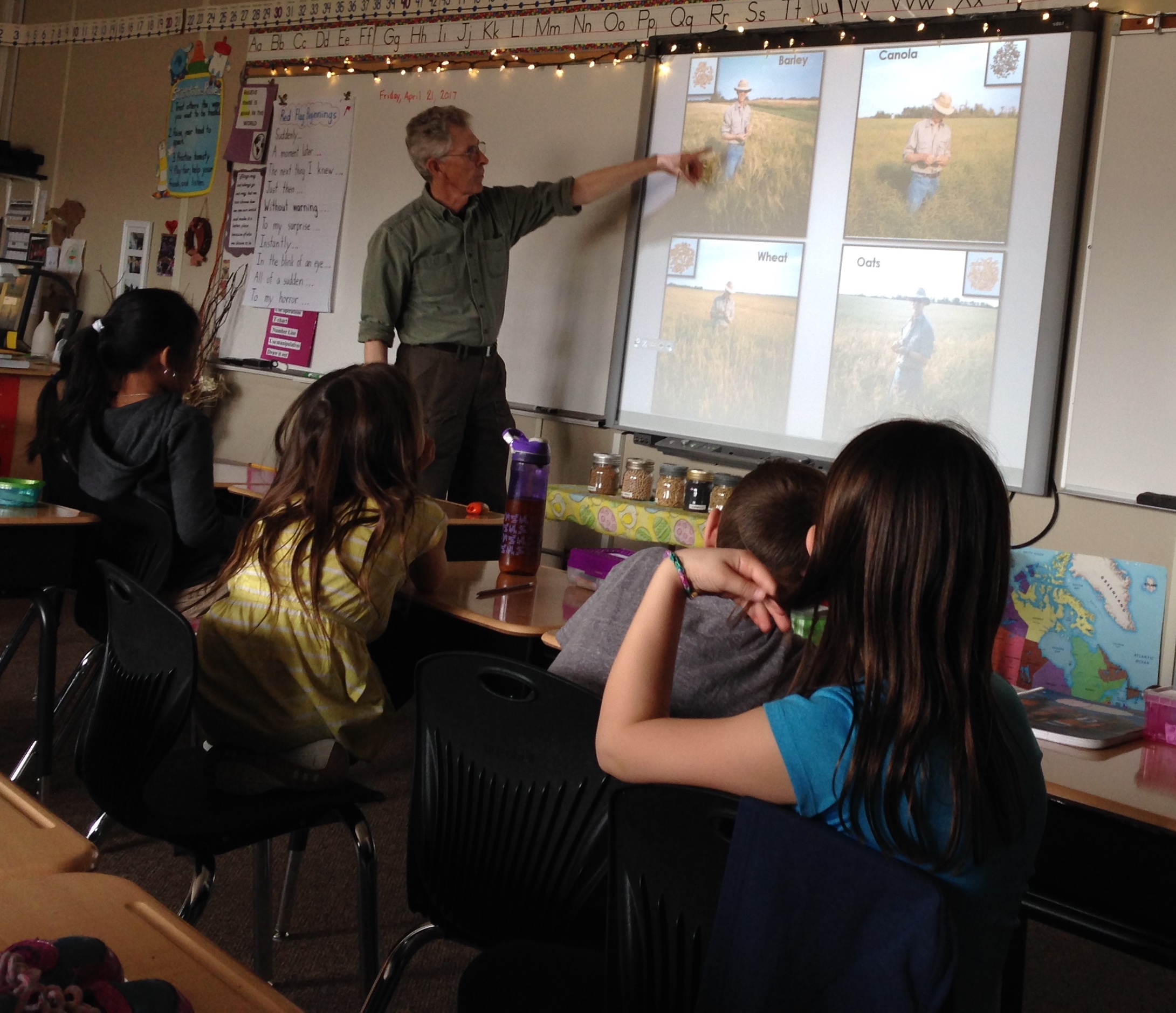Gardens foster feelings of awe for nature, and they are great for experiential learning. Such are the adventures in many of our Little Green Thumbs classrooms.
At Weinlos School, the children decided to plant some sunflower seeds that a student had brought in. Surprise! It turns out that the flowers are monsters that claim a good portion of the grow light to themselves. The plants are about 150 cm tall! The lovely flowers will hopefully develop into tasty seeds the students can enjoy.
Harvest is an exciting time, and many Grade 3 students at École Greenfield had not eaten a lot of salad before growing their own greens in the garden. The class harvested lettuce, kale and Swiss chard, then added Caesar dressing and croutons. Their teacher reported that: “Everyone LOVED it and said how delicious it was. They were so proud that they had grown the salad we were eating!”
Another adventure is brewing at St. Francis of Assisi School. The students planted seeds from pumpkins they carved for Halloween. Now they have both an orange and white variety of pumpkins growing. The two plants have slightly different growth habits; while one is trailing on the ground, the other is more upright and bushy. The huge leaves and flowers are impressive and we look forward to seeing how they develop.
Gardens also present many challenges or learning opportunities. On occasion, pests such as aphids or spider mites seem to appear out of nowhere. It pays to spend time observing the plants and scouting for trouble. Unlike an outdoor garden, winter indoor gardens do not have the benefit of predatory insects helping to control pests. In many cases, soapy water and rubbing the critters off with a gentle hand will help. Other times, we need to admit a little setback and start again or take joy in the crops that succeed. As with other things in life, persistence eventually pays off!













































